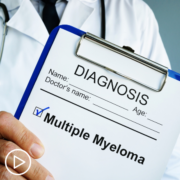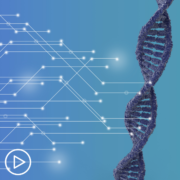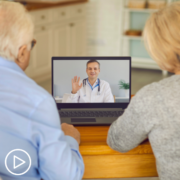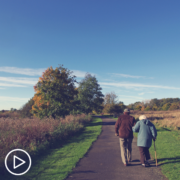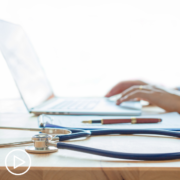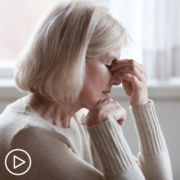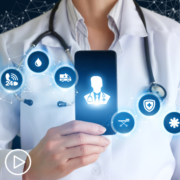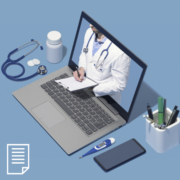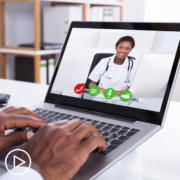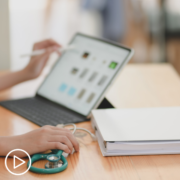30-Year Acute Myeloid Leukemia Survivor Shares His Journey
30-Year Acute Myeloid Leukemia Survivor Shares His Journey from Patient Empowerment Network on Vimeo.
What might acute myeloid leukemia (AML) patients experience for symptoms, treatment, and coping with AML? AML patient and Empowerment Lead Art Flatau shares the experience of his AML journey from diagnosis, through treatment and AML survival, and advancements in AML treatments.
Art also shares his empowerment advice for patients and care partners to ensure optimal care and how he has found a sense of purpose in patient advocacy efforts.
Related Resources:

|

|

Advice for Acute Myeloid Leukemia Patients Seeking a Clinical Trial |
Transcript:
My name is Art, and I live in Austin, Texas. In 1992, I was 31 and married with two young children. I was in graduate school and working full-time. For a couple weeks, I had been feeling tired and had been running a low-grade fever. I also had a lot of bruises, probably because I was playing rugby at the time. I thought the fatigue was because I was overworked and getting too little sleep.
On Saturday, I had a rugby game but was too tired to play more than a few minutes. The next day, I was too tired to do much. My wife and I decided that I would go to the doctor on Monday.
Monday morning, I woke, and there was blood on my pillow as my gums were bleeding. My wife wanted to take me to the ER, but I convinced her to just call our doctor. I went to the doctor later that morning. She noted my symptoms, did a quick exam, and sent me for blood work. After lunch, she called and said I needed to go to the hospital and see a hematologist. I knew I was in trouble.
We talked to the doctor and he said, “We have to see what kind of leukemia you have.” What a shock. I knew that I was sick with something I had not had before. The fact that it was cancer was a shock. I didn’t know that there were different types of leukemia but soon found out that I had acute myeloid leukemia (AML).
That evening, I received platelets and red blood transfusions. The next morning, I had a bone marrow biopsy, more platelets, and surgery to put in a central line. That afternoon, less than 24 hours after hearing the word leukemia in reference to me, I started chemotherapy. This was all overwhelming. We had no way to understand what our options were or to get a second opinion.
Three-and-a-half weeks later, I got out of the hospital with no hair, 25 pounds lighter, a lot weaker but alive. I had more chemotherapy in the next few weeks and more hospitalizations. A few months later, I was finished with chemo. I regained some strength, regrew my hair, and tried to get my life back to normal.
In early 1993, about 9 months after being diagnosed, we got another shock, I had relapsed. I needed to have a bone marrow transplant. Although we had a little time, a few days to figure out where to go for a transplant, we were again struggling to understand the process. We were also struggling to figure out how to move to Dallas for three more months for the transplant. The transplant was a long grind, a month or so in the hospital, a couple of months of going to the outpatient clinic two to three times a week, but we made it through.
Now, 30 years later, I’m still around. My children graduated from high school, college, and graduate school and have successful careers. My wife and I are empty-nesters. I am still working but hoping to retire in a few years. Although I consider myself very lucky to have survived and have had relatively few side effects, I do have some side effects to deal with, including low testosterone.
Some things that I’ve learned during my AML journey include:
- AML is a rare disease: The good news is that over the last several years a lot of new treatments have been discovered for AML. These new treatments are leading to more people surviving AML. However, these new treatments are evolving rapidly. It is important to find a cancer center and doctors who treat a lot of patients with leukemia.
- Consider volunteering: Advocacy work is an excellent way to help yourself and to support other patients and continued research efforts.
- If something doesn’t feel right with your health, advocate for yourself and ask for further testing.
These actions (for me) are key to staying on my path to empowerment.


